Thiosulfuric acid(H2S2O3), S-(2-aminoethyl) ester

Thiosulfuric acid(H2S2O3), S-(2-aminoethyl) ester structure
|
Common Name | Thiosulfuric acid(H2S2O3), S-(2-aminoethyl) ester | ||
|---|---|---|---|---|
| CAS Number | 2937-53-3 | Molecular Weight | 157.21200 | |
| Density | 1.608g/cm3 | Boiling Point | N/A | |
| Molecular Formula | C2H7NO3S2 | Melting Point | 191-194ºC | |
| MSDS | N/A | Flash Point | N/A | |
| Name | 1-amino-2-sulfosulfanylethane |
|---|---|
| Synonym | More Synonyms |
| Density | 1.608g/cm3 |
|---|---|
| Melting Point | 191-194ºC |
| Molecular Formula | C2H7NO3S2 |
| Molecular Weight | 157.21200 |
| Exact Mass | 156.98700 |
| PSA | 114.07000 |
| LogP | 1.26220 |
Synonym:2-Aminoethylthiosulfuric Acid; Cysteamine S-Sulfate; 2-Mercaptoethylamine Thiosulfate Section 2 - COMPOSITION, INFORMATION ON INGREDIENTS
Risk Phrases: None Listed. Section 3 - HAZARDS IDENTIFICATION EMERGENCY OVERVIEW
The toxicological properties of this material have not been fully investigated. Potential Health Effects Eye: May cause eye irritation. Skin: May cause skin irritation. Ingestion: May cause irritation of the digestive tract. The toxicological properties of this substance have not been fully investigated. Inhalation: May cause respiratory tract irritation. The toxicological properties of this substance have not been fully investigated. Chronic: No information found. Section 4 - FIRST AID MEASURES Eyes: Flush eyes with plenty of water for at least 15 minutes, occasionally lifting the upper and lower eyelids. Get medical aid. Skin: Get medical aid. Flush skin with plenty of water for at least 15 minutes while removing contaminated clothing and shoes. Wash clothing before reuse. Ingestion: Never give anything by mouth to an unconscious person. Get medical aid. Do NOT induce vomiting. If conscious and alert, rinse mouth and drink 2-4 cupfuls of milk or water. Inhalation: Remove from exposure and move to fresh air immediately. If not breathing, give artificial respiration. If breathing is difficult, give oxygen. Get medical aid. Notes to Physician: Section 5 - FIRE FIGHTING MEASURES General Information: As in any fire, wear a self-contained breathing apparatus in pressure-demand, MSHA/NIOSH (approved or equivalent), and full protective gear. During a fire, irritating and highly toxic gases may be generated by thermal decomposition or combustion. Extinguishing Media: Use agent most appropriate to extinguish fire. Use water spray, dry chemical, carbon dioxide, or appropriate foam. Section 6 - ACCIDENTAL RELEASE MEASURES General Information: Use proper personal protective equipment as indicated in Section 8. Spills/Leaks: Vacuum or sweep up material and place into a suitable disposal container. Clean up spills immediately, observing precautions in the Protective Equipment section. Sweep up, then place into a suitable container for disposal. Provide ventilation. Section 7 - HANDLING and STORAGE Handling: Wash thoroughly after handling. Remove contaminated clothing and wash before reuse. Use with adequate ventilation. Minimize dust generation and accumulation. Avoid contact with eyes, skin, and clothing. Keep container tightly closed. Avoid ingestion and inhalation. Storage: Store in a tightly closed container. Store in a cool, dry, well-ventilated area away from incompatible substances. Section 8 - EXPOSURE CONTROLS, PERSONAL PROTECTION Engineering Controls: Facilities storing or utilizing this material should be equipped with an eyewash facility and a safety shower. Use adequate ventilation to keep airborne concentrations low. Exposure Limits CAS# 2937-53-3: Personal Protective Equipment Eyes: Wear safety glasses and chemical goggles if splashing is possible. Skin: Wear appropriate protective gloves to prevent skin exposure. Clothing: Wear appropriate protective clothing to prevent skin exposure. Respirators: A respiratory protection program that meets OSHA's 29 CFR 1910.134 and ANSI Z88.2 requirements or European Standard EN 149 must be followed whenever workplace conditions warrant respirator use. Section 9 - PHYSICAL AND CHEMICAL PROPERTIES Physical State: Solid Color: almost white Odor: none reported pH: Not available. Vapor Pressure: Not available. Viscosity: Not available. Boiling Point: Not available. Freezing/Melting Point: 192 deg C Autoignition Temperature: Not applicable. Flash Point: Not applicable. Explosion Limits, lower: Not available. Explosion Limits, upper: Not available. Decomposition Temperature: Solubility in water: Specific Gravity/Density: Molecular Formula: C2H7NO3S2 Molecular Weight: 157.21 Section 10 - STABILITY AND REACTIVITY Chemical Stability: Stable under normal temperatures and pressures. Conditions to Avoid: Incompatible materials, dust generation, excess heat, strong oxidants. Incompatibilities with Other Materials: Oxidizing agents. Hazardous Decomposition Products: Carbon monoxide, oxides of nitrogen, oxides of sulfur, irritating and toxic fumes and gases, carbon dioxide, hydrogen sulfide. Hazardous Polymerization: Has not been reported. Section 11 - TOXICOLOGICAL INFORMATION RTECS#: CAS# 2937-53-3: KJ0201000 LD50/LC50: Not available. Carcinogenicity: 2-Aminoethanethiolsulfuric Acid - Not listed by ACGIH, IARC, or NTP. Other: See actual entry in RTECS for complete information. Section 12 - ECOLOGICAL INFORMATION Section 13 - DISPOSAL CONSIDERATIONS Dispose of in a manner consistent with federal, state, and local regulations. Section 14 - TRANSPORT INFORMATION IATA Not regulated as a hazardous material. IMO Not regulated as a hazardous material. RID/ADR Not regulated as a hazardous material. Section 15 - REGULATORY INFORMATION European/International Regulations European Labeling in Accordance with EC Directives Hazard Symbols: Not available. Risk Phrases: Safety Phrases: S 24/25 Avoid contact with skin and eyes. S 28A After contact with skin, wash immediately with plenty of water. S 37 Wear suitable gloves. S 45 In case of accident or if you feel unwell, seek medical advice immediately (show the label where possible). WGK (Water Danger/Protection) CAS# 2937-53-3: No information available. Canada CAS# 2937-53-3 is listed on Canada's NDSL List. CAS# 2937-53-3 is not listed on Canada's Ingredient Disclosure List. US FEDERAL TSCA CAS# 2937-53-3 is listed on the TSCA inventory. SECTION 16 - ADDITIONAL INFORMATION N/A |
CHEMICAL IDENTIFICATION
HEALTH HAZARD DATAACUTE TOXICITY DATA
|
| Safety Phrases | S24/25 |
|---|---|
| HS Code | 2930909090 |
|
~77% 
Thiosulfuric ac... CAS#:2937-53-3 |
| Literature: Bulat, a. D.; Grishin, V. V.; Kuznetsova, T. E.; Nekrasov, S. V.; Passet, B. V. Pharmaceutical Chemistry Journal, 1990 , vol. 24, # 5 p. 376 - 378 Khimiko-Farmatsevticheskii Zhurnal, 1990 , vol. 24, # 5 p. 57 - 59 |
|
~% 
Thiosulfuric ac... CAS#:2937-53-3 |
| Literature: Henery-Logan,K.R.; Abdou-Sabet,S. Journal of Organic Chemistry, 1973 , vol. 38, p. 916 - 920 |
|
~% 
Thiosulfuric ac... CAS#:2937-53-3 |
| Literature: Textilfaser,Bobingen A.G. Patent: DE869066 , 1944 ; Full Text Show Details Bretschneider Monatshefte fuer Chemie, 1950 , vol. 81, p. 372,381 |
|
~% 
Thiosulfuric ac... CAS#:2937-53-3 |
| Literature: Kopelevich,V.M. et al. Pharmaceutical Chemistry Journal, 1978 , vol. 12, # 8 p. 1028 - 1031 Khimiko-Farmatsevticheskii Zhurnal, 1978 , vol. 12, # 8 p. 72 - 76 |
| Precursor 4 | |
|---|---|
| DownStream 10 | |
| HS Code | 2930909090 |
|---|---|
| Summary | 2930909090. other organo-sulphur compounds. VAT:17.0%. Tax rebate rate:13.0%. . MFN tariff:6.5%. General tariff:30.0% |
| EINECS 220-917-1 |
| Cysteamine sulfonic acid |
| 2-Aminoethanethiosulfuric acid |
| 2-Aminoethanethiosulphonic acid |
| 2-Aminoethylthiosulfuric acid |
| 2-Mercaptoethylamine thiosulfate |
| USAF EK-8413 |
| Cysteamine S-sulfate |
| 2-aminoethanethiol sulfuric acid |
| Cysteamine,S-sulfo |
| 1-Amino-2-sulfomercapto-aethan |

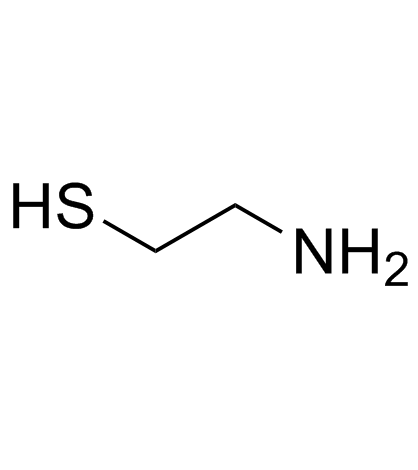
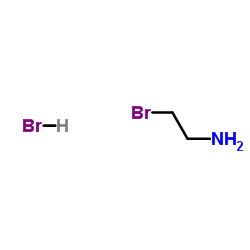
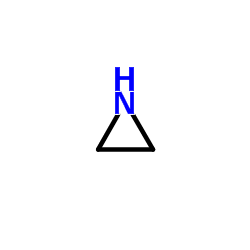
![Thiosulfuric acid hydrogen S-[2-[(2-phenoxyethyl)amino]ethyl] ester structure](https://image.chemsrc.com/caspic/142/1085-52-5.png) CAS#:1085-52-5
CAS#:1085-52-5![1-[[amino(ethylamino)methylidene]amino]-2-sulfosulfanylethane structure](https://image.chemsrc.com/caspic/012/22059-34-3.png) CAS#:22059-34-3
CAS#:22059-34-3![Thiosulfuric acid hydrogen S-[2-[[imino(methylamino)methyl]amino]ethyl] ester structure](https://image.chemsrc.com/caspic/050/22059-33-2.png) CAS#:22059-33-2
CAS#:22059-33-2![2-[([5-[(Dimethylamino)methyl]-2-furyl]methyl)thio]ethan-1-amine structure](https://image.chemsrc.com/caspic/314/66356-53-4.png) CAS#:66356-53-4
CAS#:66356-53-4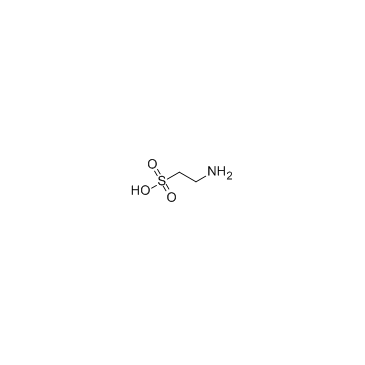 CAS#:107-35-7
CAS#:107-35-7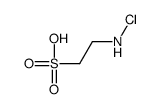 CAS#:51036-13-6
CAS#:51036-13-6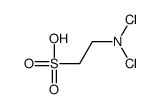 CAS#:83152-69-6
CAS#:83152-69-6![Thiosulfuric acid S-[2-(heptylamino)ethyl] ester structure](https://image.chemsrc.com/caspic/492/1191-49-7.png) CAS#:1191-49-7
CAS#:1191-49-7 CAS#:3752-51-0
CAS#:3752-51-0